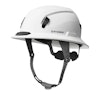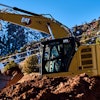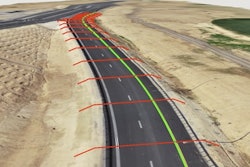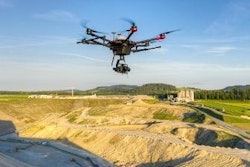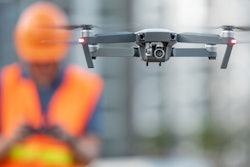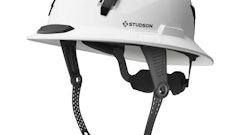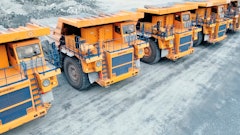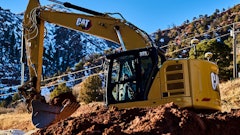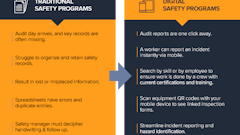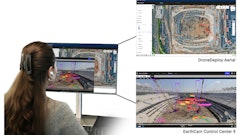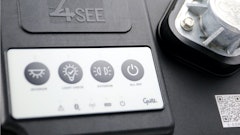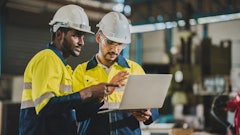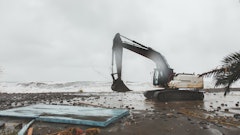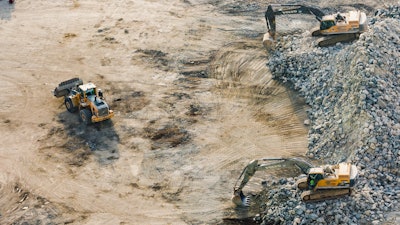
Advanced concrete contractors utilize drones and drone software as part of their broader effort to use new robotic technologies to proactively inspect and maintain concrete roads, bridges, and infrastructures. Drones collect data in real-time by flying over the jobsite, allowing managers to see what is happening, track project progress, and help discover early issues. Typically, concrete contractors fly drones around multiple sites multiple times a week, processing thousands of images and finding new use cases and workflows.
Drones capture videos and images, but it is imperative that you use a software solution that can understand the information captured and make it worthwhile for your organization. Surveyors and contractors can quickly collect survey data from drones to create high-quality 3D models. Concrete contractors share the 3D model generated with drone data across multiple team members for enhanced project collaboration. These contractors collaborate with a technology partner to successfully develop and implement their drone programs.
Drone systems, which include the drone itself and software to process data, are becoming increasingly common at jobsites, helping contractors to capture surveying, planning, and worksite data. This information can be used to increase safety, check work progress, monitor materials and equipment, and gain insights through advanced analytics to make more informed decisions.
5 Ways Drones Are Improving Safety on the Construction Site
1. Remote Site Survey & Inspections
To survey a jobsite before construction or to inspect the jobsite during construction, surveyors physically walk around the site. For a large construction site or highway, this is a very time-consuming process. Drone systems enable surveyors to get accurate information on a worksite without having to walk the entire area. Manually surveying a site can be dangerous because of all the heavy equipment that is moving about. Walking a jobsite can be hazardous to humans as some areas are unstable or simply challenging to access.
Instead of manually surveying a jobsite, surveyors can visualize and inspect a jobsite using drones, which means they don't have to be at the worksite physically. For concrete contractors, besides the heavy haulers moving about, there is the danger of a surveyor getting struck by heavy objects and materials. Overhead images from a drone show crane and other heavy equipment locations to pinpoint potential hazards and provide proactive directives to reduce danger for workers.
Drone systems can identify potential hazards at a site, such as a dangerous road grade and other site conditions. Visual inspections and surveys with a drone take hours compared to days for a surveyor to walk around the site. By shortening the survey time, work can progress sooner so that jobs stay on target.
2. Monitor Site Progress
For large construction sites, drone systems come in handy when it comes to monitoring the progress of work. With drone technology, people no longer have to physically monitor a site, which is useful when viewing hazardous areas. Drones send real-time video of site progress to managers. This information can generate a 3D model of the site, which can then be compared to the initial plan to make sure everything is progressing on schedule.
You can also run side-by-side comparisons of the construction site across selected dates to view progress. Stay on schedule by monitoring execution progress and comparing work executed with design plans. You can also determine if the construction work is deviating from the original plan.
Drone systems can also monitor the transport of materials, ensuring materials arrive at the correct place at the right time, helping keep the project on schedule. Workers can be dispersed to a specific location to help unload materials to avoid trucks sitting idle waiting to empty. Traffic can be monitored so that workers are not at risk of being hit by a truck.
3. Concrete Inspections & Repairs
Drone systems can be used to proactively inspect concrete in roads, bridges, and other infrastructures. From digging foundations to pouring concrete to monitoring structures to look for cracks and deterioration, drones provide extra information that inspectors can't see from the ground.
 Automated grade checking via an unmanned aerial vehicle.Heavy Construction Systems Specialists, Inc.
Automated grade checking via an unmanned aerial vehicle.Heavy Construction Systems Specialists, Inc.
Using drone technology to inspect bridges and other infrastructure can significantly reduce the entire inspection process time and cost. It only takes a few hours to fly the drone around a structure and only a pilot and spotter to do the work, versus an entire crew and several days or weeks for a manual inspection.
4. Deterring Theft
Every year, up to $1billion in materials and equipment is stolen from construction sites. Drones can fly over a jobsite at all hours of the day and night, monitoring the use of equipment and storage of materials to make sure nothing has gone missing. While many construction sites deploy cameras around the work area, certain areas of the site aren't in the camera range.
A drone can fly anywhere. Surveillance drones equipped with motion sensors, infrared, or night vision cameras are now being deployed at construction sites to deter theft. These drones fly in a pre-programmed flight pattern, while an operator can monitor the video feed remotely. Alerts are sent to project managers and owners or local authorities if an unauthorized person is detected after hours at the site. The video the drones capture can also be used to prosecute thieves.
5. Measuring Stockpiles
Drone systems can check locations for materials and calculate stockpile volumes and assets. You can draw borders around an area for automatic volume calculations and analyses. Drone software generates 3-D images, which can track volumes and quantities to determine usage and when to re-order materials when combined with calculation functions and analytics.
 The software behind unmanned aerial vehicles (often referred to as drones), are intelligent enough to detect image duplication, analyze the workzone, as well as detect stockpiles of materials.Heavy Construction Systems Specialists, Inc.
The software behind unmanned aerial vehicles (often referred to as drones), are intelligent enough to detect image duplication, analyze the workzone, as well as detect stockpiles of materials.Heavy Construction Systems Specialists, Inc.
Using drone systems to measure stockpiles instead of sending someone out to measure in-person, which can be dangerous, is a faster and safer method. Drones first take aerial photos of your site, combined with GPS or ground control data to create coordinates, then this is processed into a 3-D model. By simply drawing a border around an area, you can automatically generate volume calculations and analysis. You can measure the amount of earth removed or the volume of sand and gravel needed as a foundation.
The data collected by the drones is highly accurate, so you will know if your stockpile of materials is dangerously high or the right height. These measurements allow contractors to track their materials inventory and make sure they consume the materials at the right pace.
Drone technology usage is growing in acceptance at construction sites, especially for doing some work that can put workers in danger. By having inspectors, surveyors, and project managers conduct certain operations remotely using drone technology; the jobsite is much safer.
About the author
JP Giometti is the executive director for global strategy and corporate development at HCSS.

